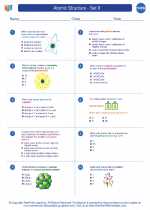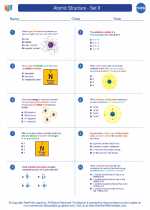Colorimetry
Colorimetry is a technique used to quantitatively determine the concentration of a substance in a solution by measuring its absorbance or transmittance of light at a specific wavelength. This technique is widely used in chemistry, biochemistry, and environmental science to analyze the concentration of various compounds such as metal ions, organic compounds, and biological molecules.
Principles of Colorimetry
The principle of colorimetry is based on the Beer-Lambert Law, which states that the absorbance (A) of a substance in a solution is directly proportional to its concentration (c) and the path length (l) of the light passing through the solution.
Mathematically, the Beer-Lambert Law is expressed as:
center;">A = εcl
Where:
- A = Absorbance
- ε = Molar absorptivity (extinction coefficient)
- c = Concentration of the substance
- l = Path length of the light through the solution
Colorimetry Applications
Colorimetry is widely used in various fields for quantitative analysis, including:
- Environmental monitoring of pollutants
- Analysis of metal ions in water samples
- Determination of protein concentrations in biochemistry
- Quantification of vitamins and other organic compounds in food and pharmaceuticals
Colorimetry Procedure
The basic steps involved in a colorimetric analysis are:
- Preparation of standard solutions with known concentrations
- Selection of appropriate wavelength for measurement based on the absorption spectrum of the substance
- Calibration of the colorimeter using a blank solution
- Measurement of absorbance of the sample solution and comparison with the standard solutions to determine the concentration
Study Guide: Colorimetry
When studying colorimetry, it's important to focus on the following key concepts:
- Understanding the Beer-Lambert Law and its application in colorimetry
- Knowing the factors that affect the absorbance of a substance, such as concentration and path length
- Being familiar with the instrumentation used in colorimetric analysis, including colorimeters and spectrophotometers
- Practicing the preparation of standard solutions and the calibration of colorimetric instruments
- Understanding the various applications of colorimetry in different fields of science and industry
By mastering these concepts and practicing colorimetric analysis, students can gain a thorough understanding of this important analytical technique and its practical applications.
.◂Chemistry Worksheets and Study Guides High School. Atomic Structure - Set II

 Worksheet/Answer key
Worksheet/Answer key
 Worksheet/Answer key
Worksheet/Answer key
